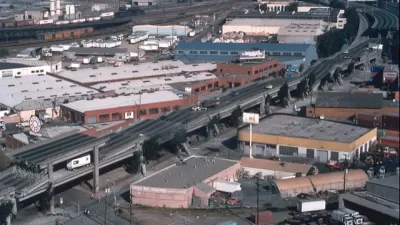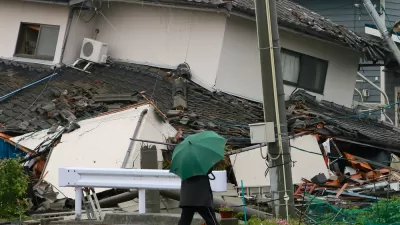The epicenter of Tuesday's quake was in the state of Puebla, 80 miles southeast of Mexico City. Soft soil and unreinforced buildings magnified the damage. The quake comes two weeks after an 8.1 quake struck off the coast of the state of Oaxaca.
Two hours before the earthquake, residents took part in a citywide drill to mark the anniversary of the 1985 magnitude 8.0 quake resulting in at least 5,000 deaths.
"At least 44 buildings collapsed or partly collapsed in Mexico City, according to Mayor Miguel Ángel Mancera," reports for The Washington Post. One of those collapsed buildings was a school in the Mexico City neighborhood of Villacoapa where "at least 22 bodies — all but two belonging to children — were found. Another 30 students at the primary school, as well as eight adults, were missing, the reports said."
"Building standards have improved since the 1985 quake, said Guillermo Lozano, the humanitarian and emergency affairs director for World Vision Mexico, a Christian humanitarian organization, but there are many old buildings in the city, which were among the worst-hit," report Kate Linthicum, Rong-Gong Lin II, Alexandra Zavis and Ruben Vives for the Los Angeles Times.
"Mexico City is partially built on old lake sediment, which is much softer than rock," adds The soil, and the shallowness of the quake, exacerbated the quake's force.
The seismic waves can be amplified traveling through the sediment, said Don Blakeman, a geophysicist with the U.S. Geological Survey, making the damage worse than in areas on more-solid ground. He said aftershocks were possible, too. The rupture was approximately 50 kilometers, or 31 miles deep, and as a rule, the shallower an earthquake is, the higher the chance for aftershocks. “Fifty kilometers is pretty shallow, so I would expect aftershocks,” Blakeman said.
Retrofitting older buildings
The collapsed buildings in Mexico are a reminder of the need to prepare older homes in quake zones for the inevitable.
"The city of Los Angeles has among the nation’s strongest quake rules, requiring fixes to both brittle concrete buildings and wood soft-story apartments," report Shelby Grad and Rong-Gong Lin II for the Los Angeles Times. Soft-story buildings, where the ground floor is often a garage or open area "not specifically designed to transmit shear or lateral forces between the story above and the earth," according to CM Peck, Inc., are inherently more vulnerable to earthquakes.
Tectonic plates moving
Referring to the Sept. 7 quake, Partlow writes, "Scientists said the same large-scale tectonic mechanism caused both events: The larger North American Plate is forcing the edge of the Cocos Plate to sink. This collision generated both quakes. But it was unlikely that the quake earlier this month caused Tuesday’s disaster."
FULL STORY: Strong earthquake shakes Mexico, killing more than 200 people

Alabama: Trump Terminates Settlements for Black Communities Harmed By Raw Sewage
Trump deemed the landmark civil rights agreement “illegal DEI and environmental justice policy.”

Planetizen Federal Action Tracker
A weekly monitor of how Trump’s orders and actions are impacting planners and planning in America.

Why Should We Subsidize Public Transportation?
Many public transit agencies face financial stress due to rising costs, declining fare revenue, and declining subsidies. Transit advocates must provide a strong business case for increasing public transit funding.

Understanding Road Diets
An explainer from Momentum highlights the advantages of reducing vehicle lanes in favor of more bike, transit, and pedestrian infrastructure.

New California Law Regulates Warehouse Pollution
A new law tightens building and emissions regulations for large distribution warehouses to mitigate air pollution and traffic in surrounding communities.

Phoenix Announces Opening Date for Light Rail Extension
The South Central extension will connect South Phoenix to downtown and other major hubs starting on June 7.
Urban Design for Planners 1: Software Tools
This six-course series explores essential urban design concepts using open source software and equips planners with the tools they need to participate fully in the urban design process.
Planning for Universal Design
Learn the tools for implementing Universal Design in planning regulations.
Caltrans
Smith Gee Studio
Institute for Housing and Urban Development Studies (IHS)
City of Grandview
Harvard GSD Executive Education
Toledo-Lucas County Plan Commissions
Salt Lake City
NYU Wagner Graduate School of Public Service




























